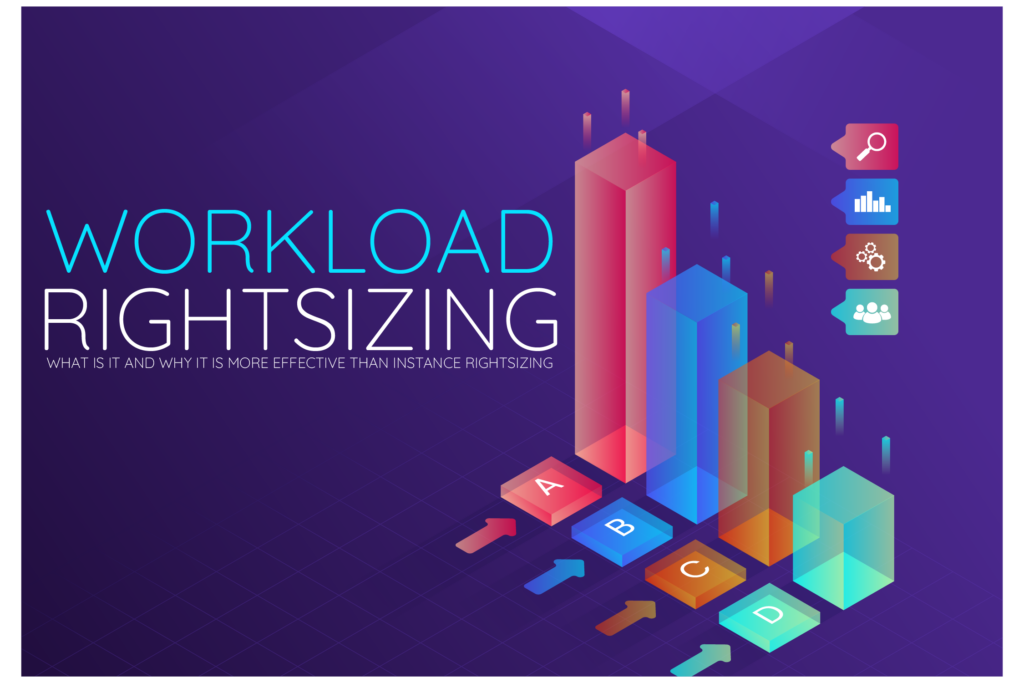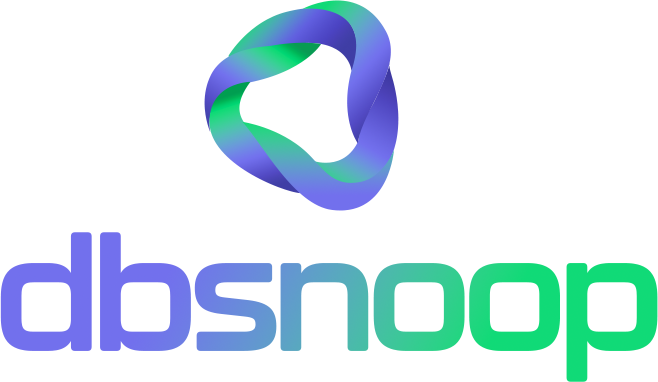

It has become an almost sacred ritual in cloud cost management: every quarter, the FinOps team, armed with reports from tools like AWS Compute Optimizer or Azure Advisor, meets with engineering for a “rightsizing” campaign. The goal is noble and seemingly logical: to analyze the CPU and memory utilization metrics of the database instances and reduce their size to eliminate the waste of idle resources. However, most of the time, this practice is a superficial optimization that masks a much deeper problem.
By adjusting the size of the infrastructure based on utilization metrics, teams are not optimizing the real cost; they are just resizing the cage to accommodate an inefficient animal. The true cause of the high resource consumption, the database workload, composed of poorly written queries, suboptimal execution plans, and a flawed indexing strategy, remains untouched. The result is a marginal saving in the short term, followed by performance problems, saturation alerts, and the inevitable need to scale the instance up again as soon as the load increases.
This article technically details why reactive instance rightsizing is a trap and how an engineering approach, focused on the observability and optimization of the workload, is the only way to achieve real, deep, and sustainable cloud cost reduction.
The Trap of Reactive Optimization: Instance Rightsizing
The traditional rightsizing approach is fundamentally flawed because it analyzes the problem from the wrong perspective. It looks at the symptoms, high CPU usage, IOPS spikes, high memory consumption, and tries to medicate them with more or less hardware. It is a reactive approach that confuses the effect with the cause, leading to a cycle of superficial and often harmful optimization.
The Metrics of Illusion: CPU, Memory, and IOPS
Native cloud tools and FinOps platforms provide an aggregated view of resource utilization. An SRE can look at an Amazon CloudWatch chart and see that an RDS db.m5.2xlarge instance operated at an average of 85% CPUUtilization over the last month. The instinctive, and wrong, conclusion is that the instance is correctly sized, perhaps even needing an upgrade soon.
What this metric does not reveal is why the CPU is at 85%. The hidden truth, which CloudWatch cannot show, is that 70% of this utilization might be caused by a single query, executed thousands of times per minute, that is forcing the database to perform a Full Table Scan on a table with millions of rows. High CPU utilization is not an indicator of high business demand; it is an indicator of software inefficiency.
By accepting this 85% metric as a valid baseline, the team legitimizes the inefficiency and agrees to pay a premium for it, month after month. Rightsizing becomes an exercise in compliance with waste, not optimization.
The same logic applies to the disk’s IOPS (Input/Output Operations Per Second). A team might pay a fortune for high-performance io2 Block Express storage because the application is constantly at the IOPS limit. However, a workload analysis would reveal that 90% of these I/O operations are unnecessary, caused by queries that read millions of rows from the disk when they could be reading just a few hundred pages from memory if they had the correct index. Paying for more IOPS is like trying to fill a leaky bucket by adding more water instead of fixing the hole.
The Cost of the “Safety Buffer”
This reactive and blind-to-the-root-cause approach leads to a culture of defensive overprovisioning. Since the team has no visibility into the workload’s efficiency, it cannot predict how the system will behave under stress. For fear of performance incidents that could lead to downtime, engineers add a “safety buffer,” provisioning instances that are 30-50% larger than the average utilization suggests.
This buffer is not for legitimate traffic spikes; it is an expensive insurance against spikes of undiagnosed code inefficiency. Thousands of dollars are spent every month on idle computing capacity, simply because the organization lacks the data to make an informed decision based on the real efficiency of the software. Traditional rightsizing, at best, trims the edges of this buffer; it never eliminates the need for it.
The True Optimization: Workload Rightsizing
Real and lasting optimization inverts the equation. Before asking “what size instance do I need?”, the correct and fundamental question is “how efficient is the work this instance is performing?”. This approach, which we call “Workload Rightsizing,” focuses on optimizing the software first, and then sizing the hardware for the work that is truly necessary. It is an engineering process, not an accounting exercise, enabled by deep observability.
Step 1: Baseline and Workload Diagnosis with Observability
The first step is to temporarily ignore your cloud provider’s infrastructure metrics and create a baseline of your workload’s efficiency. This is impossible without a tool that can look “inside” the database. An observability platform like dbsnOOp was designed to do exactly that. It not only measures latency but also analyzes the total cost of each query, multiplying its average latency by its execution frequency to arrive at the most important metric: “DB Time,” or the total load.
The platform generates a precise ranking of the most resource-intensive queries. Instead of an aggregated and contextless number like “85% CPU,” you get a specific and actionable insight: “The query SELECT * FROM activities WHERE user_id = ? is responsible for 60% of the total DB Time, consuming 50 seconds of CPU time every minute.” This is the missing piece of information. Now the engineering team knows exactly where to focus their optimization efforts to get the maximum impact. It ceases to be an infrastructure problem and becomes a well-defined software problem.

Step 2: Root Cause-Driven Optimization
With the target identified, dbsnOOp provides the tools for optimization. For the problematic query above, the platform automatically captures and analyzes its execution plan. The diagnosis can be instantaneous: the query is performing a Full Table Scan because there is no index on the user_id column.
dbsnOOp goes beyond diagnosis and generates the solution. It provides the exact CREATE INDEX command, ready to be validated in a staging environment and applied in production. The development team doesn’t need to spend hours investigating or debating the best indexing strategy; the solution is delivered by the platform, based on real production data. After applying the index, the query’s execution plan changes to a high-performance Index Seek.
The operation that used to read millions of rows and consume seconds of CPU now reads only a few data pages and executes in milliseconds. The work the database needs to do has been reduced by orders of magnitude.
Step 3: Recalibration and the (Real) Instance Rightsizing
This is where the magic happens. After optimizing the workload, the team looks at the infrastructure metrics again. The CPUUtilization that was stuck at 85% has now dropped to an average of 20%. The IOPS load that was constantly at the limit is now almost zero. The system is performing the same amount of business work (or even more, as it is now faster), but with a fraction of the computational effort.
With this new and dramatically lower baseline, instance rightsizing ceases to be a lie and becomes a real and informed optimization. The db.m5.2xlarge instance that seemed to be the right size is now comically overprovisioned. The team can, with full confidence, resize it to a db.m5.large, a 75% reduction in size and cost, knowing that performance will not be compromised because the workload’s efficiency was corrected at its source. The saving is not 10% or 15% by trimming the “safety buffer”; it’s savings of 50%, 75% or more, because most of the previous cost was simply the price of waste.
The Compounding Benefits of the Correct Approach
Adopting Workload Rightsizing has an impact that goes far beyond reducing the cloud bill. It instills a culture of efficiency and responsibility that permeates the entire engineering organization, generating compounding benefits.
Breaking the Cost-Performance Cycle
The reactive instance approach creates a vicious cycle: inefficient code leads to high resource consumption, which leads to high costs, which leads to pressure for optimization, resulting in a superficial rightsizing that doesn’t solve the problem, and the cycle repeats next quarter.
The proactive approach of dbsnOOp creates a virtuous cycle. Efficient code, validated by continuous observability, requires less hardware. Less hardware means lower costs and less operational complexity. The budget that was once consumed by overprovisioned instances can be reinvested in engineers to build new, revenue-generating features.
Increased Speed and Reliability
Engineering time is the most expensive and valuable resource in a technology company. The time that engineers spend in “war rooms” to put out performance fires or participating in reactive rightsizing meetings is time not being used for innovation. A system with an optimized workload is inherently more stable and reliable. It has more “headroom” to absorb traffic spikes without degrading, resulting in fewer alerts, fewer incidents, and a less-overloaded SRE team. This frees the team to focus on automation and continuous improvement projects, instead of firefighting.
A Strategic Bridge Between FinOps and Engineering
Workload Rightsizing finally connects the world of FinOps with that of engineering in a collaborative way. The FinOps team no longer needs to present a cost report and ask “why are we spending so much?”. Now, they can collaborate with engineering using a common language and actionable data. The discussion changes from “we need to cut RDS costs by 15%” to “dbsnOOp has identified that these 5 queries are responsible for 80% of the cost of our main instance. Optimizing them will allow us to downsize, saving 60%”. The platform provides the “why” behind the cost, enabling intelligent business decisions based on concrete technical data.
Unlocking Sustainable Scalability
Perhaps the most strategic benefit is scalability. A system whose workload has not been optimized scales poorly and expensively. To double the user capacity, you need to double, or even quadruple, the size of your infrastructure. The cost grows exponentially with demand.
A system with an optimized workload, on the other hand, scales linearly and sustainably. The queries are so efficient that the system can absorb a 2x or 3x increase in traffic with minimal impact on resources. The company can grow with the confidence that its data architecture will not break or explode the costs. Performance optimization ceases to be a cost-reduction project and becomes a strategic enabler of business growth.
Stop Paying for Inefficiency
If your rightsizing process is based only on infrastructure metrics, it is, at best, an incomplete optimization and, at worst, an illusion. It is an exercise that only validates and accommodates the inefficiency of your software, forcing you to pay a premium for it every month on your cloud bill. True optimization, the one that generates massive and sustainable savings, starts with a different question: how efficient is my workload?
By focusing on optimizing the most resource-intensive queries, you not only improve the performance and stability of your application; you unlock the true savings potential of the cloud. Stop resizing the infrastructure to fit your inefficient code. Start optimizing your code so you need a much smaller and cheaper infrastructure.
Want to transform your rightsizing process from an illusion to a real optimization? Schedule a meeting with our specialist or watch a live demo!
To schedule a conversation with one of our specialists, visit our website. If you prefer to see the tool in action, watch a free demo. Stay up to date with our tips and news by following our YouTube channel and our LinkedIn page.
Schedule a demo here.
Learn more about dbsnOOp!
Learn about database monitoring with advanced tools here.
Visit our YouTube channel to learn about the platform and watch tutorials.

Recommended Reading
- Why Is My Cloud Database So Expensive?: A practical analysis of the main factors that inflate the AWS RDS, Azure SQL, and Google Cloud SQL bill, connecting the cost directly to unoptimized workloads, oversizing, and the lack of visibility into actual consumption.
- Locks, Contention, and Performance: A Technical Study on the Recovery of Databases in Critical Situations: This article offers a technical deep dive into one of the most complex problems in data engineering. It details how lock contention can paralyze a system and how a precise analysis of the lock tree is crucial for the recovery of databases in critical situations.
- Indexes: The Definitive Guide to Stop Making Mistakes: A practical and fundamental guide on the highest-impact optimization in a database. The text covers the most common errors in index creation, such as over-indexing and the wrong column order, which can degrade both read and write performance.

